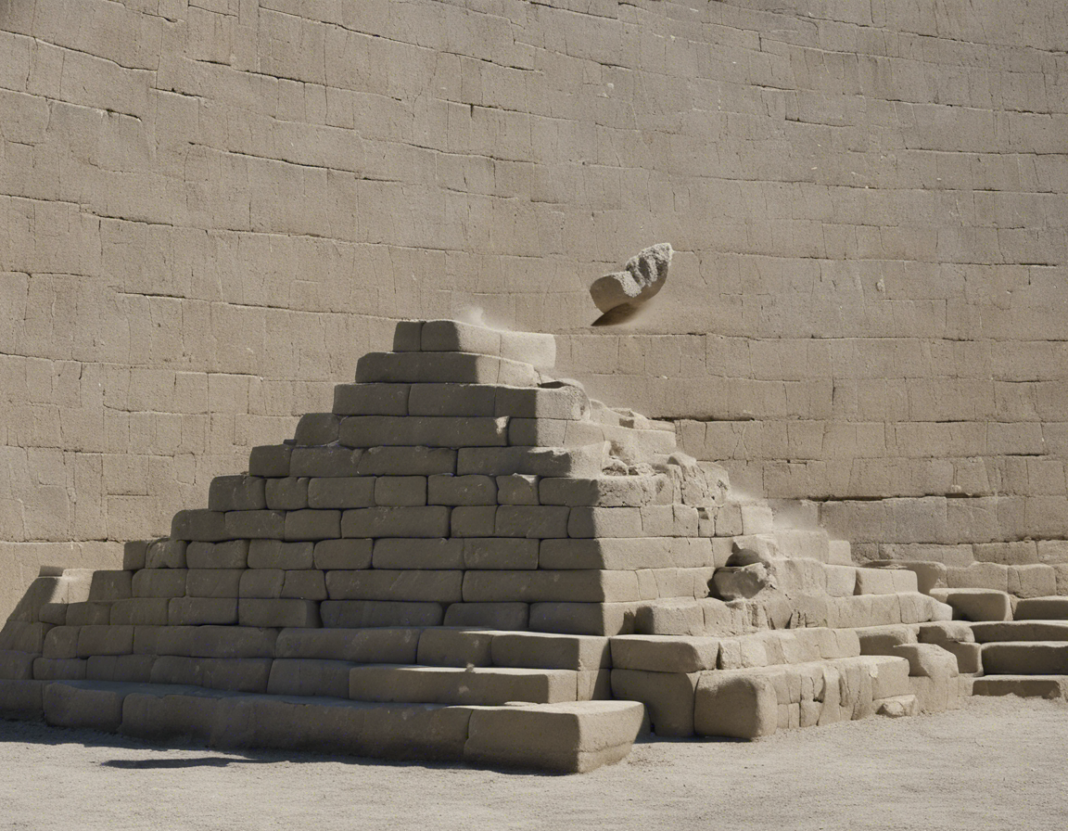Throwing stones into the water, watching them splash and sink, is a simple yet satisfying childhood pastime. The act of skipping a stone across a body of water, however, takes this concept to a whole new level. Known as " ascending stone," this traditional activity has captivated people for generations and continues to be a popular pastime worldwide.
In this comprehensive guide, we will delve into the art of ascending stone, exploring the history, technique, benefits, and advanced variations of this timeless activity. Whether you're a beginner looking to master the basics or a seasoned pro seeking to enhance your skills, this article will provide you with everything you need to know to become an expert in the art of ascending stone.
The History of Ascending Stone
The history of ascending stone can be traced back to ancient times when skipping stones across the water was not just a form of entertainment but also a means of communication. In some cultures, people would skip stones across the water to send messages to distant villages or across bodies of water, creating ripples that could be interpreted by trained observers.
In modern times, ascending stone has evolved into a popular recreational activity enjoyed by people of all ages. From competitive stone-skipping tournaments to casual outings at the lake, the art of throwing stones across the water continues to captivate and inspire individuals around the world.
The Science Behind Ascending Stone
Ascending stone may seem like a simple and effortless activity, but there is actually a science behind the art of skipping stones across the water. Several factors come into play when it comes to achieving the perfect skip, including the shape and weight of the stone, the angle of the throw, and the speed and force of the toss.
The optimal stone for skipping is flat, round, and smooth, with a weight that allows it to maintain momentum as it skips across the surface of the water. The key to a successful skip is to throw the stone at a low angle, parallel to the water, with a smooth and controlled motion that imparts spin to the stone, creating lift and propulsion.
Tips for Perfecting Your Technique
- Choose the Right Stone: Look for a flat, round stone with a smooth surface.
- Find the Perfect Angle: Aim for a low angle, parallel to the water, for the best results.
- Practice Your Release: Maintain a smooth and controlled motion to impart spin to the stone.
- Focus on Follow-Through: Extend your arm forward after releasing the stone to maximize distance.
The Benefits of Ascending Stone
Beyond the sheer enjoyment of watching a stone skip across the water, ascending stone offers a range of benefits for both the mind and body. Physically, the act of skipping stones can improve hand-eye coordination, fine motor skills, and arm strength. Mentally, ascending stone can help reduce stress, increase focus and concentration, and provide a sense of relaxation and mindfulness.
Furthermore, ascending stone is a social activity that can be enjoyed with friends and family, fostering connections and creating lasting memories. Whether you're looking to unwind after a long day or simply enjoy the beauty of nature, skipping stones across the water is a simple yet fulfilling way to engage with the world around you.
Advanced Variations of Ascending Stone
While the traditional method of skipping stones across the water is a timeless classic, there are also advanced variations of ascending stone that can challenge even the most experienced stone-skippers. From double skips to side-arm throws, these techniques can take your stone-skipping skills to the next level and impress your friends with your prowess.
Double Skips
One advanced variation of ascending stone is the double skip, where the stone bounces off the water twice before sinking. To achieve a double skip, choose a flat and smooth stone, throw it at a slightly higher angle than usual, and aim for a strong and consistent spin to maximize the number of skips.
Side-Arm Throws
Another challenging technique in ascending stone is the side-arm throw, where the stone is thrown with a side-armed motion rather than the traditional overhand toss. This technique can create unique skipping patterns and requires precise timing and coordination to execute successfully.
High-Angle Skips
For those looking to push the boundaries of traditional stone-skipping, high-angle skips offer a thrilling alternative. By throwing the stone at a steep angle relative to the water's surface, you can achieve high bounces and impressive distances, creating a dramatic visual display that is sure to impress onlookers.
Frequently Asked Questions (FAQs) about Ascending Stone
- What is the world record for the most skips in stone-skipping?
-
The current world record for stone-skipping is held by Kurt Steiner, who achieved an incredible 88 skips across the water in a single throw.
-
Are there specific competitions for stone-skipping enthusiasts?
-
Yes, there are numerous stone-skipping tournaments held around the world, where participants compete to achieve the longest skips and most creative techniques.
-
Can any stone be used for ascending stone, or are there specific requirements?
-
While any stone can theoretically be skipped across the water, flat, round, and smooth stones are generally preferred for achieving the best results.
-
Is ascending stone a sport that requires special training or equipment?
-
Ascending stone is a recreational activity that can be enjoyed by people of all ages and skill levels, with no special training or equipment required.
-
What are some safety precautions to keep in mind when engaging in ascending stone?
- When skipping stones across the water, be mindful of your surroundings and avoid throwing stones near people or wildlife. Additionally, always ensure that the area is clear of debris or obstacles that could interfere with your throws.
As you venture into the world of ascending stone, remember that practice makes perfect, and experimentation is key to discovering new and exciting techniques. Whether you're a beginner taking your first steps or a seasoned pro looking to push the boundaries of stone-skipping, the art of ascending stone offers endless opportunities for creativity, enjoyment, and connection with the natural world.

